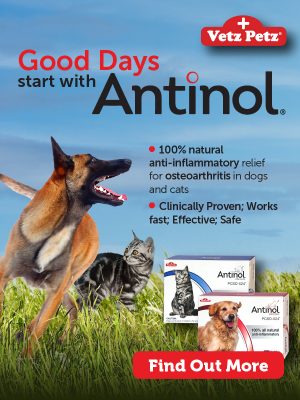Terrapin TLC: All Things Terrapin and More
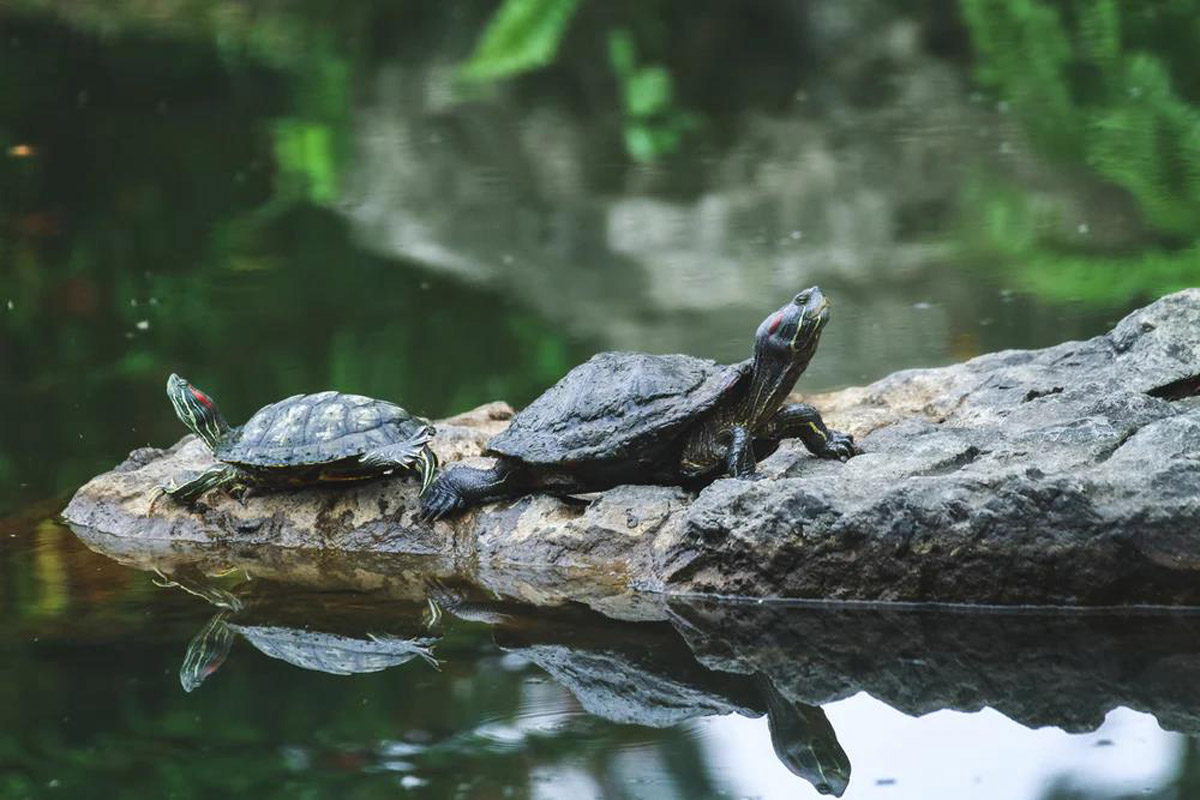
Source: Benjamin Wong
Before we lay the ground rules about terrapin care and all that jazz, let’s first familiarise ourselves with what exactly terrapins are.
Turtles, Tortoises or Terrapins?
Many people often get these names mixed up as synonyms for one another, and we don’t blame them. They are fairly similar in meaning with minor distinctions between them. Allow us to break it down for you while sparing you the technical jargon.
Turtles
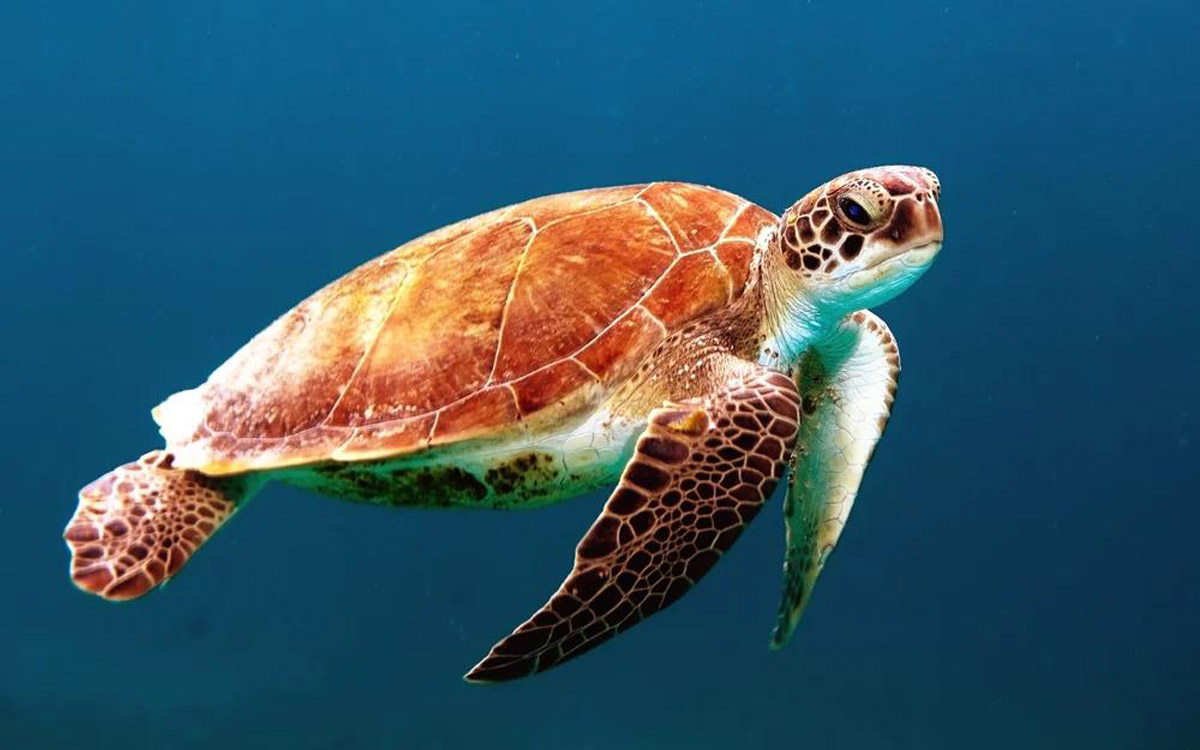
Source: Wexor Tmg
Scientifically, ‘turtles’ is an umbrella term that encompasses all of them. Regardless of land or water, these four-legged hard-shelled creatures are all technically considered ‘turtles’. However, in layman terms, turtles are more commonly associated with those that can swim or like water.
Hence, good examples falling under this classification would be the Leatherback Sea Turtle or Green Sea Turtles.
Tortoises
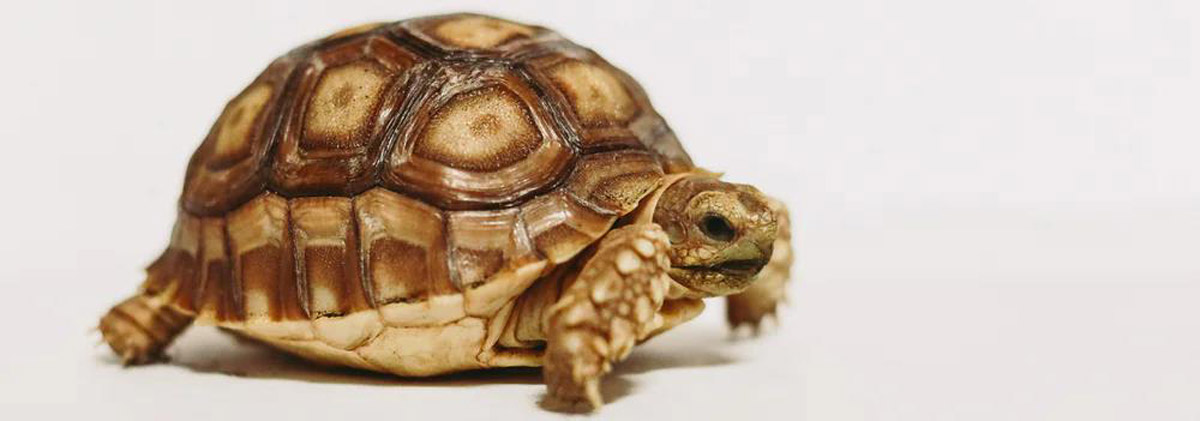
Source: Craig Pattenaude
On the flip side, tortoises are their land-loving, stubby-toed counterparts that prefer stomping around as opposed to swimming. Although do note, tortoises are not legal in Singapore so the only time you’ll ever encounter one is at the Zoo or in an educational diagram of sorts.
For your general knowledge, examples of tortoises include the prolific Galapagos Tortoise or the Indian Star Tortoise.
Terrapins
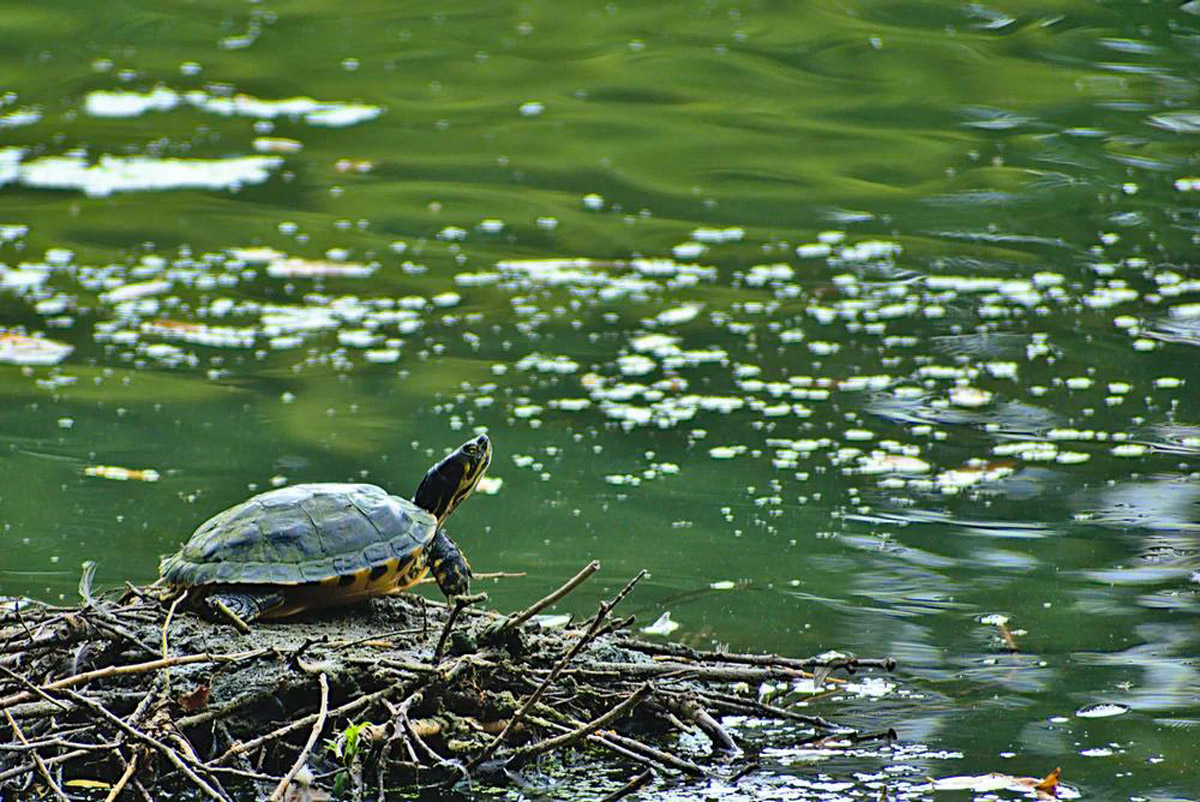
Source: Martin Sepion
And of course, we have the main attraction of this article: terrapins. Perhaps a generic conflation of both turtles and tortoises, they are the semi-aquatic bunch out of the lot. Hence, they’re a hybrid of both a turtle and a tortoise.
Examples of terrapins would therefore include the common Red-eared Sliders and the Malayan Box Terrapin. They are the only two permitted species in Singapore. However, most households would probably own a Red-eared Slider rather than a Malayan Box Terrapin simply by virtue of the latter’s higher price tag.
More General Terrapin Trivia
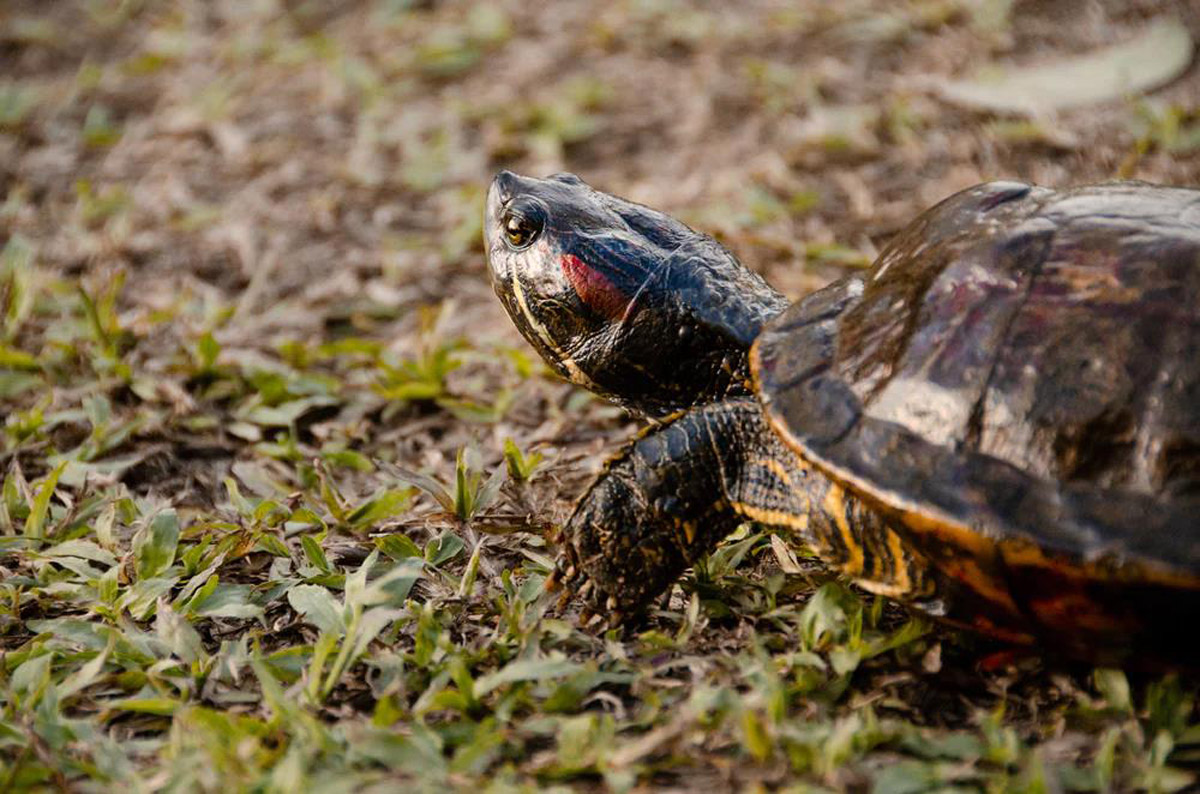
Source: grainfalls
For standardisation purposes, we’ll be referring to the Red-Eared Slider from here.
Size and Lifespan
A terrapin is usually measured via its shell length or straight carapace length.
When baby sliders are first acquired from pet shops, their typical size ranges between 3cm to 4cm. Upon adulthood (~2 years), these adult sliders might range between 15cm to 25cm (males) and 20cm to 30cm (females).
So yes, your terrapin can grow into the size of a dinner plate. And yes, this also does mean that females grow relatively larger than males.
Terrapins are also immortal. Haha, just kidding, they’re not but they live to a very ripe old age according to other animal’s standards.
For comparison, a hamster lives between 2 to 3 years. A guinea pig lives between 4 to 8 years. And a dog or cat lives between 10 to 15 years. But terrapins are known to live for 20 to 40 years, a truly incredible feat!
In other words, your terrapin will grow old together with you and your family as an honorary family member.
What About Biting or Hibernating?
Terrapins might bite but of course, this is subjective to their individual personality. Some are more gentle while others might be more feisty. Nonetheless, be careful of a terrapin’s bite because they can really pack a punch!
Terrapins also hibernate, but in a less intense way. In their native habitats, they would brumate which is a less extreme version of hibernation during the colder months. However, since Singapore is always so sunny and hot, there’s no need for brumation here.
Diving into Terrapin Care
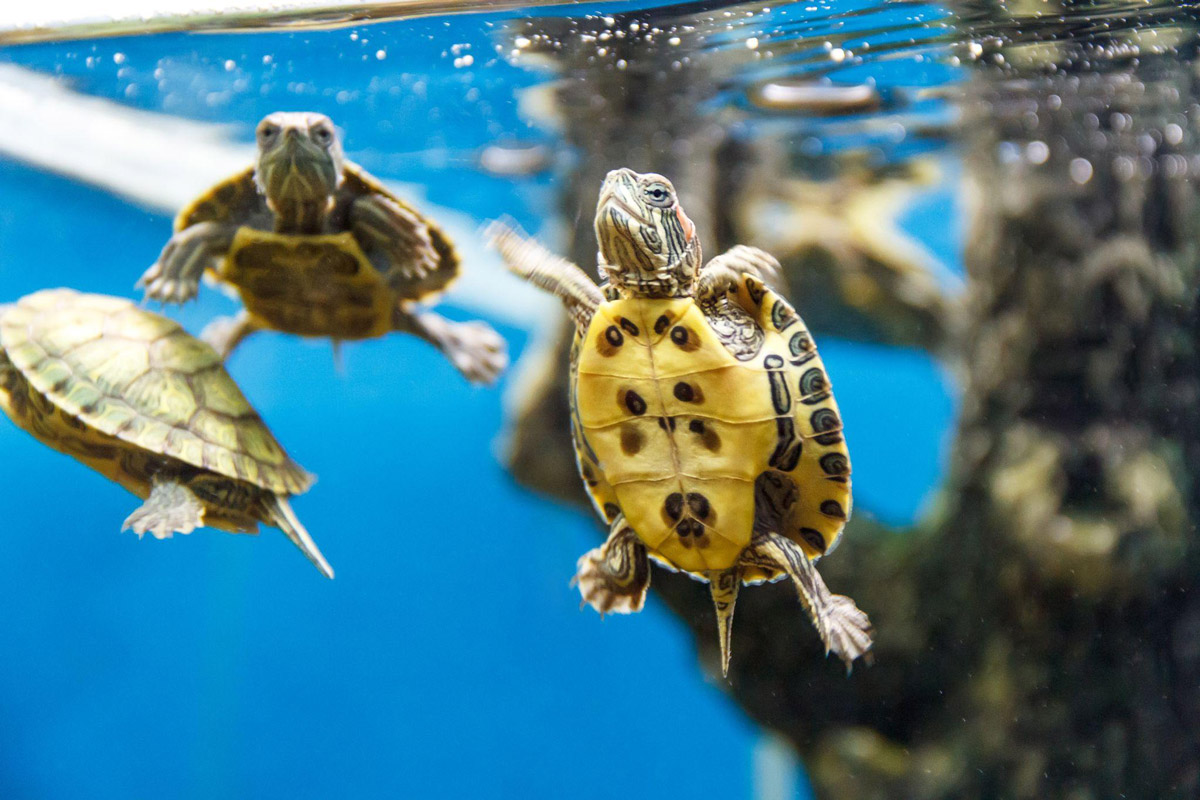
Now just because a terrapin appears relatively lower maintenance than other pets, doesn’t mean that their care should be underestimated. In fact, there’s a lot of necessary research and preparation that goes into setting up the proper environment to welcome your little turtle friend home.
Diet
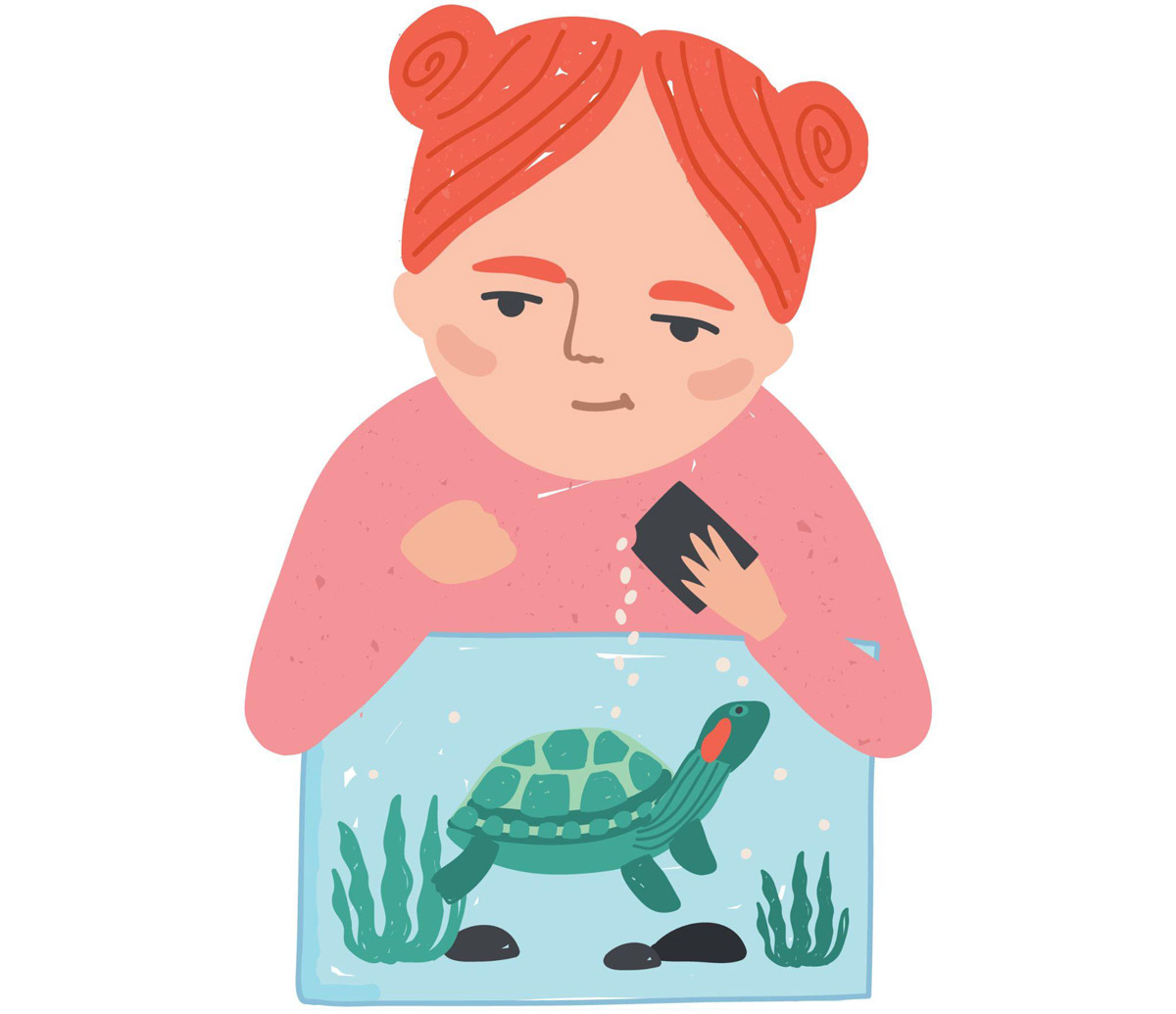
For diet, the staple food for terrapins would be the turtle commercial pellets. Pellet brands consist of Nutrafin, Hikari and Mazuri — with the latter two being bigger but pricier.
However, aside from consuming commercial pellets, terrapins are also omnivores. So, you can also choose to give your terrapin a mixed diet of plants and animal-based food consisting of defrosted freshwater fish, shrimps, live invertebrates, fruits and vegetables.
You may also incorporate other vitamins and additional supplements into its diet according to your local vet’s recommendation, of course.
Interestingly, terrapins have a tendency to drag their food into the water before consuming it. As a result of this messy eating habit, be prepared to clean up loads of leftover pellets and food bits.
Housing
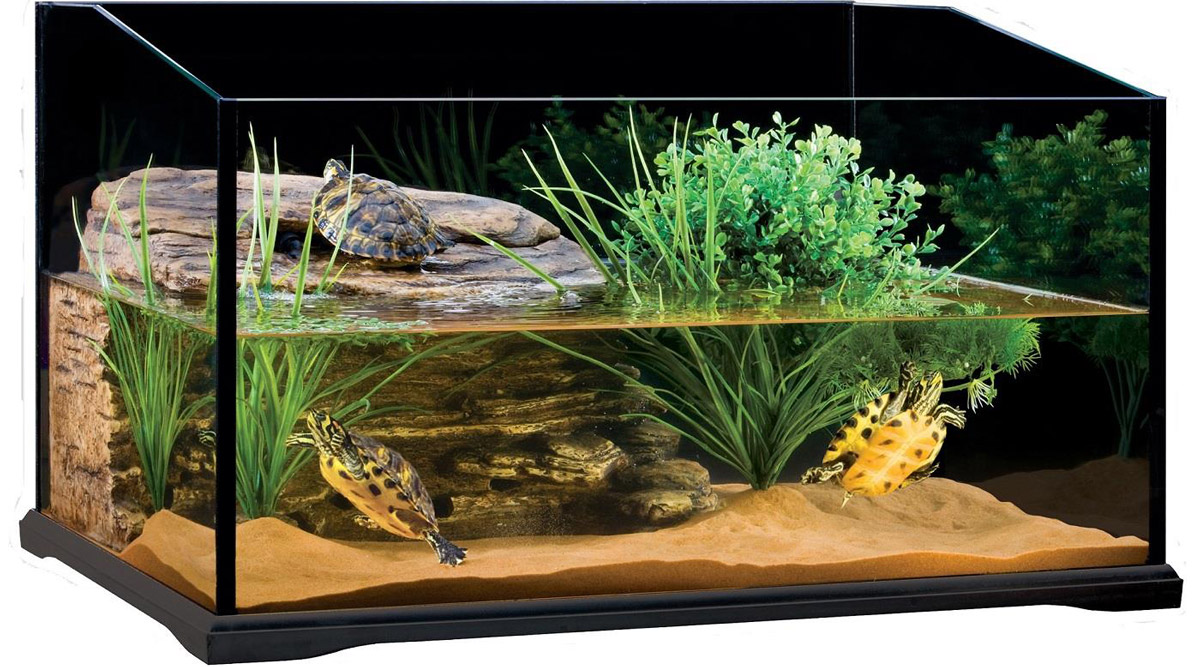
Source: infoturtle
For habitat, terrapin requires a fairly large tank to live in considering how big it can grow up to. A general recommendation would be to opt for tanks 3 feet and above (in length), capable of holding 60 to 100 gallons of water.
The rationale for the tank size is due to the depth of water needed. Terrapins are known to produce a lot of waste. As a result, if the tank has low water volume and lacks filtration, the tank can become dirty and stench up quickly — thus requiring a lot of cleaning that could’ve otherwise been avoided.
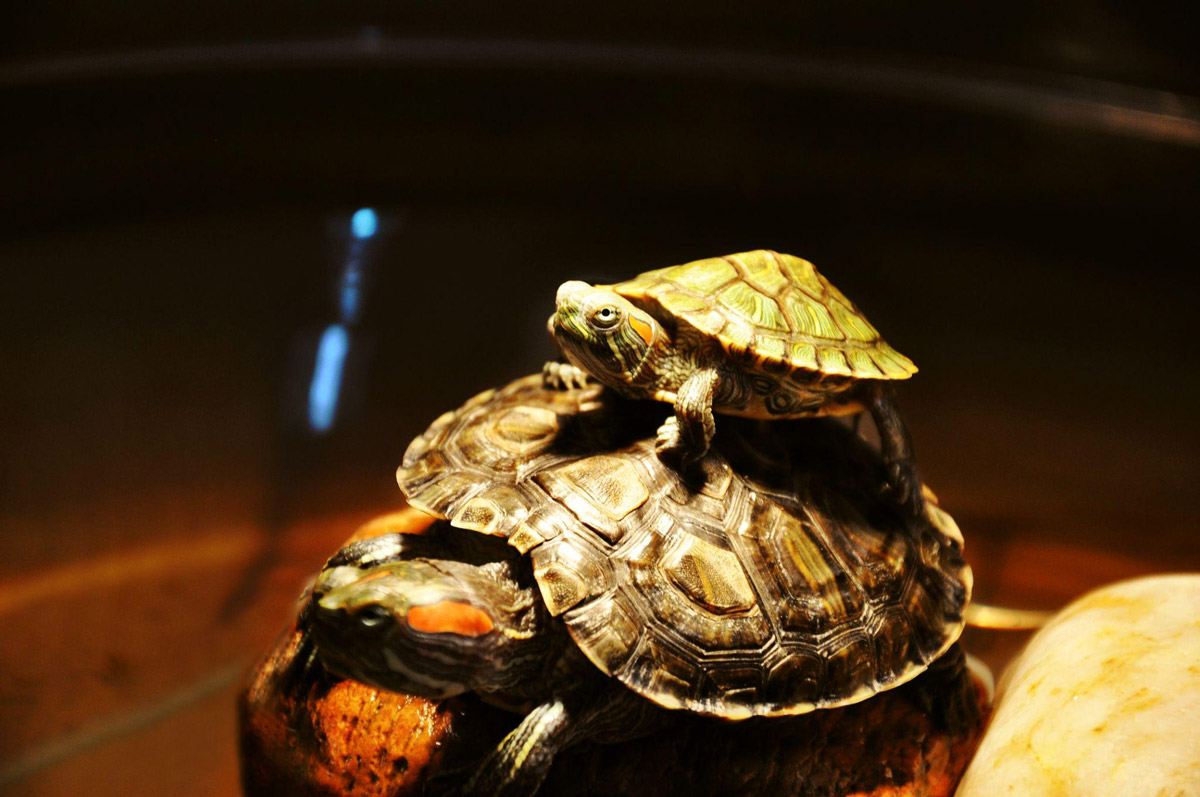
Two stacked terrapins drying off under a basking lamp
Apart from water, terrapins also require ample land area in either a well-lit area or under a basking lamp. Terrapins need this plot of land in order to completely dry off their shell lest it starts to rot. Exposure to light and sun also facilitates calcium absorption, which is essential for their health.
Do note however that basking lamps aren’t just your ordinary lamp. It requires a specific light bulb that emits UVB light.
Filtration
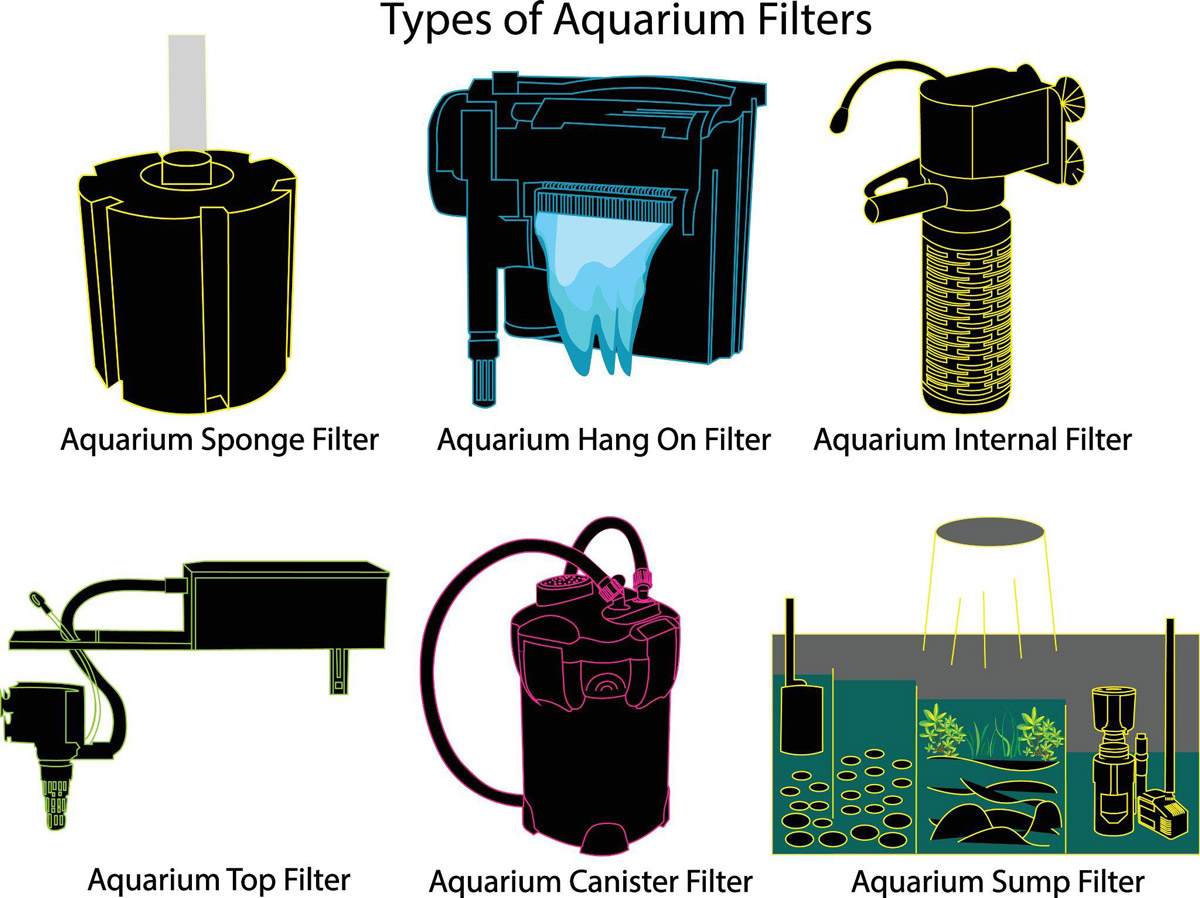
For more details on types of filters, click here.
When it comes to filtration, it’s perhaps one of the key components to tank maintenance you’ll need to grasp. Novices might assume that filtration is only relevant to fish keepers, but this is untrue.
Terrapin owners should also be knowledgeable about filtration because as mentioned, terrapins are high bio-waste producers. As a result, without a good cleaning system, your tank can become filthy in the blink of an eye.
Having a good filter coupled with sufficient water volume allows you to instantly eliminate unwanted stench and adjust water-change frequencies. Depending on the calibre of your filter, it may also remove excess chlorine from the water to promote the growth of good bacteria.
The N2 Cycle
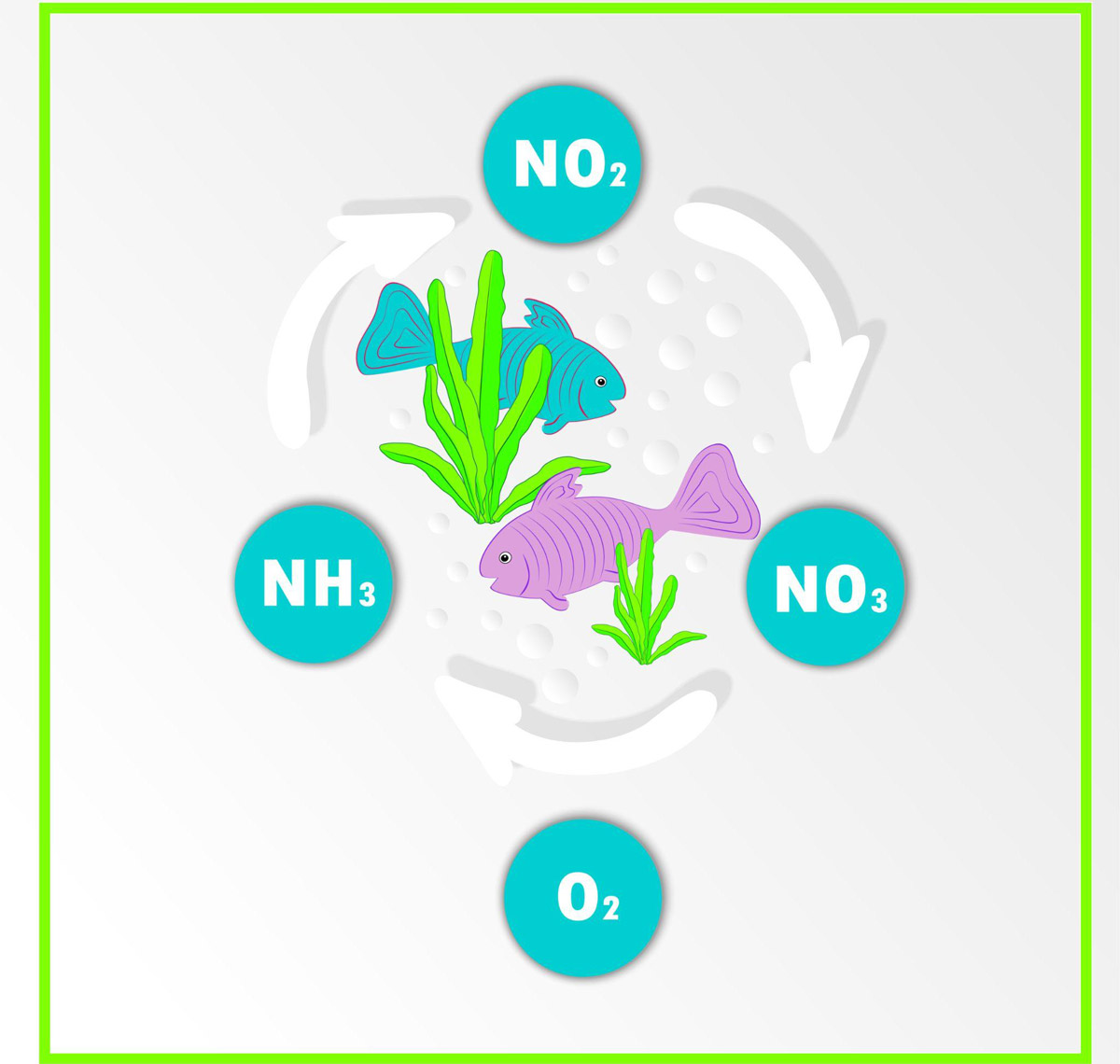
Speaking of filtration, let’s conclude this discussion of the nitrogen (N2) cycle which is pertinent for all types of filtration, regardless of aquatic animal. It might seem intimidating initially, but fret not, we’ll deconstruct the cycle for you.
The N2 cycle simply refers to the conversion process of nitrogen found in the air. In your terrapin’s tank, the cycle begins with ammonia (NH3) found in leftover pellets and excreted waste. Ammonia is subsequently converted into nitrite (NO2) and then nitrate (NO3) before converting back to nitrogen (N2).
As a result, the whole conversion cycle is as follows:
Ammonia > Nitrite > Nitrate > Nitrogen
Essentially, the first 2 compounds ammonia and nitrite are harmful. It is the main cause of death in aquarium fishes. Although it doesn’t necessarily kill terrapins, it contaminates and stenches up the water nonetheless. On the other hand, nitrate is not as potent, but still not ideal.
In order to convert the unwanted compounds successfully, beneficial nitrifying bacteria is necessary. Once again, this is where filtration comes in.
There’s isn’t enough naturally occurring nitrifying bacteria in the surrounding atmosphere. Hence, your filtration will act as a good ‘breeding ground’ to help the limited bacteria grow and multiply.
Therefore, the process of filtration can be simplified as the conversion of ammonia to nitrite to nitrate. Afterwards, the leftover nitrates can then be discarded by changing your tank’s water.
Terrapin Round-up
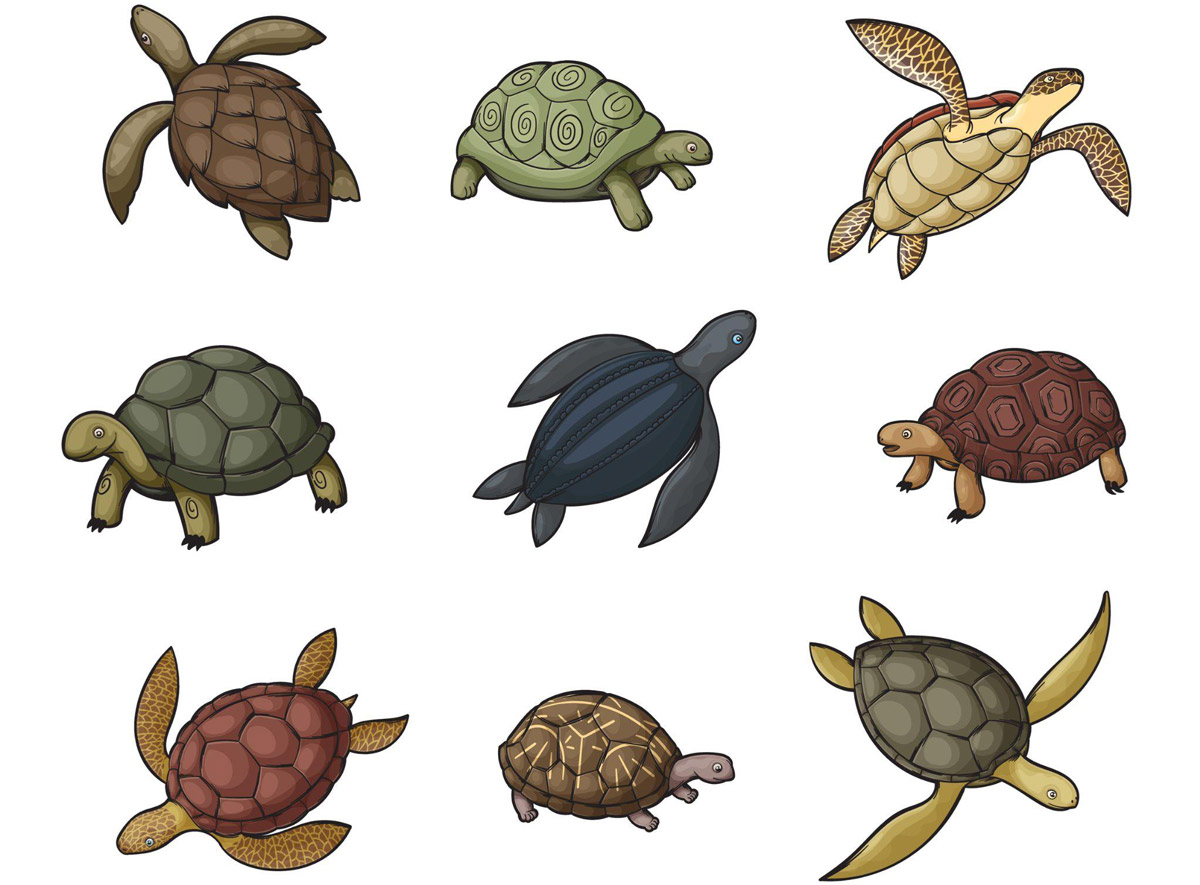
All in all, a terrapin is a pet and thus a commitment, regardless of its deceivingly easy maintenance. Once you purchase it, it’ll be under your care for the next almost 40 years which is a hefty duration for pet companionship.
So before you decide to purchase the small, adorable terrapin swimming around in your local pet shop’s display tank, think again. Are you ready for the time and dedication needed to give this little critter the fullest life it deserves?







